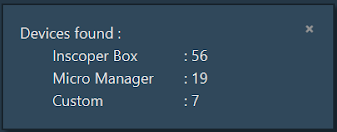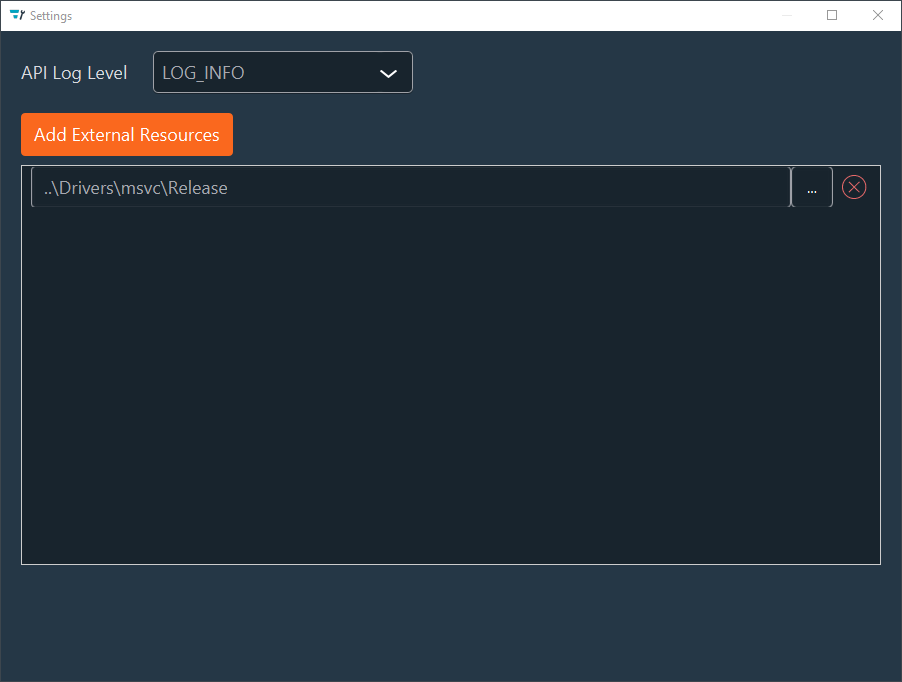Getting started
The main interface is divided into three sections:
I - Toolbar
II - Configuration section (detailed here
)
III - Device Controller (DC) status & actions

-
File allows to:
- New: Create a new configuration
- Open: Open an existing configuration
- Save: Save current configuration
- Exit: Close the Configurator window.
-
Devices options are:
- Reload Devices: Reload devices information from
the DC and external drivers (micromanager drivers and custom drivers).Notice: When the checking is done, a popup window appears in the bottom of the Configurator window indicating you the number of found/loaded devices (Inscoper, Micromanager or custom [which is no inside the DC])

- Load Devices from File: read and import the devices information (settings, configuration, etc.) from stored file.
- Save Devices to File: export the devices information to a new local file.
- Display Devices: Display of the previously mentioned popup window.
- Reload Devices: Reload devices information from
the DC and external drivers (micromanager drivers and custom drivers).
-
Settings: You can specify the directory where the
Micromanager and custom drivers are stored on your computer. You can add several
directories by clicking Add External Resources and delete
them by clicking on
. You can specify the API log level used by the configurator in the drop-down menu. When you are done, you can close the window and all the information will be saved automatically.

-
In the Help menu, you have the following options:
- Update Firmware: Open explorer window to upload the firmware file
- Online Help: Open the Configurator or Inscoper User Guides
- Visite Website: Open the Inscoper website
- About: Open popup window with all information
about the Configurator (Configurator version, API number, Firmware Version)

- Connect: Connection of Device Controller
- Disconnect: Disconnection of the Device Controller
- Restart Firmware: Restart the Firmware
- Reset Inscoper Box USB view: Triggers the Inscoper Box to rescan all USB devices connected to its ports. For example, if a device is plugged in while the Configurator is open, this action updates the detected USB devices within the DC.
